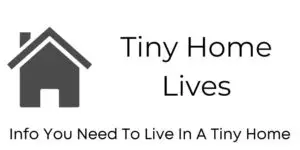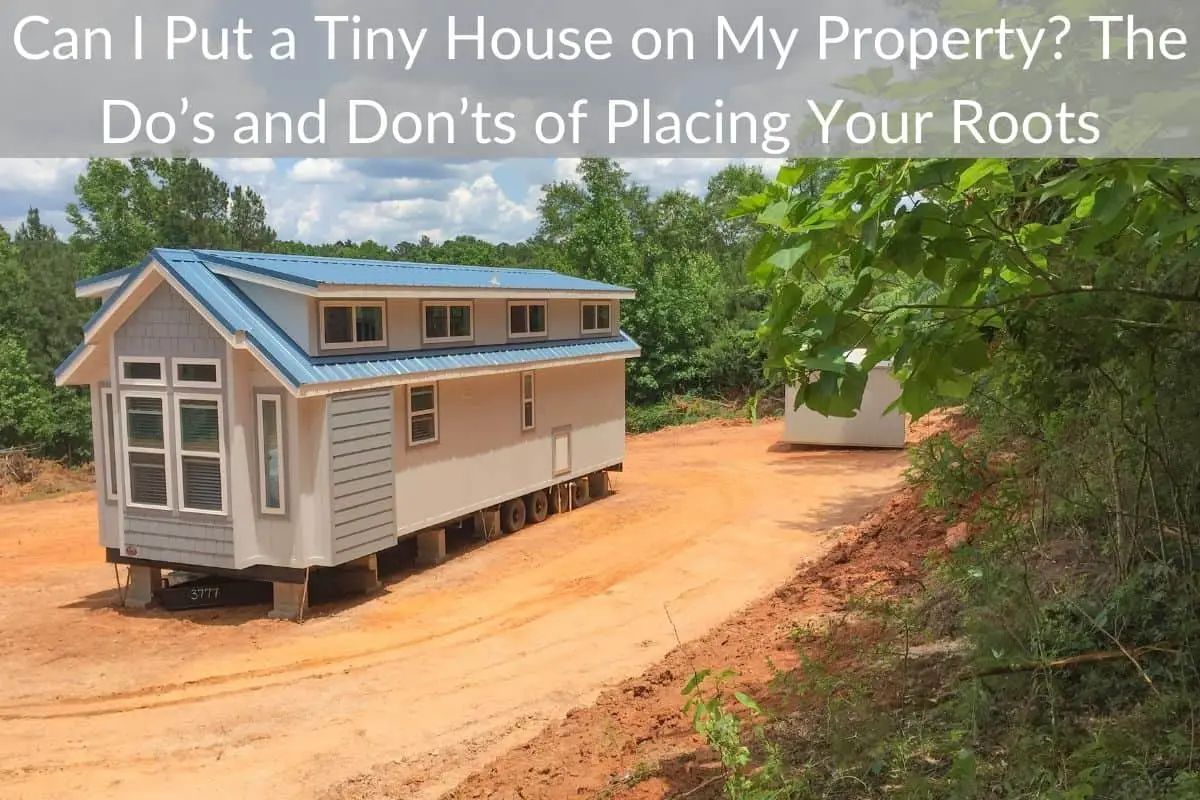Table of Contents
*This post may contain affiliate links. As an Amazon Associate we earn from qualifying purchases.
Tiny homes are quickly becoming one of the most popular alternatives to owning a traditional home. They can be a primary residence, a guest home or even a space for a teenager. The biggest question we hear is, “Can I put a tiny house on my property?” We researched the sometimes complicated issue and this is what we found.
Can I Put a Tiny House on My Property?
The short answer is yes; in some cases. But there are some important things to consider before you purchase a tiny house for your property. We’ll go through the potential pitfalls and offer solutions to each one so that you’ll have the greatest chance to fulfill your tiny house dreams.
While there are some exceptions to the general “yes” answer to the question, “can I put a tiny house on my property,” with a little planning and knowledge, you can have the tiny home you want on the property you have. There are even tiny home-friendly cities that you could consider moving to if you are really motivated to have your tiny home on your own land.
Cities and counties are scratching their heads at the idea of tiny homes. On the one hand, they offer people an affordable housing option that fits a minimalist or traveling lifestyle. The average cost of building a tiny house is about $23,000 The cost of buying one is about $60,000; far below conventional home prices. But on the other hand, these tiny homes with wheels do not generate property taxes in the same way traditional homes do. The tiny homes are also seen as housing for transient populations, which may put other property values at risk.
Let’s look at the states that are working to embrace the tiny home lifestyle. But first, a primer on zoning laws and building codes.
Zoning Laws
Zoning laws and building codes often require that a home have a minimum square footage. That number is much larger that the 400 square feet or less that would classify your home as tiny. There are a few cities that have zoning laws that include tiny homes. But those are the exception, not the rule. We have compiled a list of states where you can build your tiny home on your property. Keep in mind that if your state is not included, you could always petition the city government to make a zoning change for your property.
Building Codes and Zoning Laws: What’s the Difference?
There are differences between building codes and zoning laws. Building or construction codes rule how you will build your tiny home. Zoning laws will tell you where you can build it and answer the question, “Can I put a tiny house on my property?”
The International Residential Code is the backbone of most of the building codes in the United States. It specifies minimum square footage for rooms and ceiling height for the dwelling.
Zoning Laws are influenced by many factors. They determine what your property can be used for, whether it be residential, commercial or both. You will have to research the laws in your city or county to find out how they will affect your tiny house plans.
You can apply for a variance through your local planning commission to build a structure that doesn’t adhere to current building codes. Let’s look at the states where the answer to “can I put a tiny house on my property” is more likely to be a yes.
Tiny House-Friendly States
California
California is one of the most accommodating states for the tiny-house enthusiast. Alameda, Contra Costa, Lake, Mendocino, Napa, Sacramento, and Sonoma counties all allow tiny homes on wheels as “caregiver dwellings.” This means you can park one in the back yard of the home where a person needs assistance. Maybe your parents are getting older and need a watchful eye. Or your grown children have young children of their own that need care.
Recently, Fresno city zoning gave the nod to tiny houses on wheels as “backyard cottages” with no stipulation that the person living in the tiny house assist a person living in the main home. Other cities in California are taking notice and drafting plans of their own to allow tiny homes on others’ property. This could be great news for you if you live in these areas.
The answer to “can I put a tiny house on my property in California” is a yes!
Take note that one of the state’s largest cities, Los Angeles, is not as eager to embrace the tiny house owner. Recently, tiny homes for previously homeless people were returned after being seized by the police. The mayor, however, said he does not support the idea of a tiny house village.
Colorado
A few Colorado towns have changed their zoning regulations for tiny homes. About six years ago, Walsenburg was the first town in Colorado to change its zoning regulations for tiny homes that have between 120 and 600 square feet. In Durango, ADUs became allowable in the East Animas City neighborhood as of 2014.
Florida
Rockledge, Forida, fueled by a citizen-led initiative, created two zoning districts for tiny houses: a redevelopment mixed use district (RMU) and a planned unit development (PUD). The city also added definitions to distinguish tiny houses and tiny houses on wheels.
Tiny houses on wheels and foundation-based tiny homes are legal inside the Rockledge city limits in the two zoning districts. The Rockledge Tiny House Community is a pocket neighborhood with homes of 150 to 700 square feet located around shared park space.
Massachusetts
If you’re wondering about how to fight city hall yourself, you can get the laws changed. In Massachusetts, a Nantucket resident fought for an amendment to the zoning bylaws there for residents to build tiny homes. The case has made its way to the state’s attorney general. If the amendment gets approved, it would allow new residential construction under 500 square feet in several districts.
If approved, Nantucket would be the first Massachusetts community to approve zoning that allows for tiny houses. Other communities are looking at the idea, but the state’s zoning laws have made it illegal for people to live in tiny homes. We will have to see what happens.
Michigan
A tiny home community of low-income residents in the heart of Detroit is currently being built. The city required a community organization to work with it to develop zoning for homes that range in size between 250 and 400 square feet. The houses there are architecturally different. Some are studios while others feature a loft, and others still have a separate bedroom. The community has only tiny homes: no tents or RVs are allowed.
New York
Although not technically a tiny house district, New York City opened its first micro apartment building to residents in recent years. The mayor’s office has relaxed zoning restrictions so that new development can include micro apartments, or those under 400 square feet.
In the more rural areas of New York State, you can find tiny cabins; but no towns have adopted lax zoning rules that allow tiny house construction. Tiny houses making news in New York include three 160-square-foot “Getaway” cabins on wheels that are rented out. Because the dwellings are on wheels, they are registered as an RV.
Oregon
If you are interested in living in Portland, it is the best major city for building and living in tiny houses. It answers the question “can I put a tiny house on my property?” with a “heck yes!” The city allows, and supports, the construction of accessory dwelling units, ADUs. This is a major win for the tiny house enthusiast. This allowance lets you choose anything from living in tiny house communities to staying in a tiny house hotel.
Texas
Spur, Texas declared itself the tiny house capital of America a few years ago. The local government rid the city of nearly all building requirements. Since then, Spur has sprouted many tiny house buildings. The owners were required to submit their tiny house design for approval and connect to electrical, water, and sewage system services. Because of tornados in the area, all tiny homes, even those on wheels, have to be on a concrete foundation.
Rules on ADUs were relaxed in Austin and in Fort Worth. Austin is home to at least four tiny home communities that surround the city. The Pecan Meadow Village in the suburb of Kyle will have up to 400 tiny homes. The Village Farm in east Austin is an agrihood where people can have a sustainable lifestyle by growing their own food.
Texas also has “unrestricted zoning ordinances,” which allows for any type of building in the location of your choice. Consider it the last version of the Wild West. This haphazard zoning is in remote, rural areas throughout the country. Austin’s LiveWork is an exception to the rule. It’s located about 15 minutes outside of the city and is under no zoning governance. Builders are planning for tiny resident living on more than 10 acres of land.
Conclusion
The answer to your question, “can I build a tiny house on my property,” is a tentative yes. Depending on where you live, you could buy and place a tiny home on your property. In other areas, you may be able to join a community of tiny house owners in a neighborhood. Or you can opt for a tiny home on wheels and skip building codes altogether. Finally you could petition your community leaders to allow tiny homes and pave the way for a new style of living. It’s up to you!

